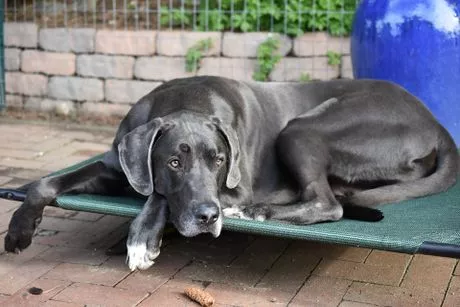3 Ways to Identify a Great Dane

The Great Dane is a noble and majestic breed, known for its enormous size, strength, and gentle temperament. If you’ve ever encountered one of these friendly giants, you know they are truly a sight to behold. But how can you be sure that the dog you’re looking at is really a Great Dane? Here are three key characteristics to look for when identifying a Great Dane.
1. Size and Structure
The first and most noticeable feature of a Great Dane is their incredible size. Male Great Danes can reach heights of 30 to 32 inches at the shoulder, while females can stand between 28 to 30 inches tall. In terms of weight, males typically range from 140 to 175 pounds, and females from 110 to 140 pounds.
In addition to their height and weight, Great Danes have a distinct body structure that sets them apart from other breeds. They possess a strong, muscular frame with a deep chest and well-defined ribcage. Their necks are long and elegant, with their heads held high and proud.
2. Head Shape and Facial Features
The head of a Great Dane is unique and easily recognizable. They have a large, rectangular-shaped skull with parallel sides leading down to their strong muzzle. This gives their face an almost box-like appearance. Their ears can be either cropped or left natural – cropped ears stand erect, while natural ears are medium-sized and triangular in shape, folded forward close to the cheek.
A Great Dane’s eyes are medium-sized, almond-shaped, and set wide apart on the face. They have an intelligent and alert expression that conveys the gentle nature of the breed. Their noses are typically large and black, although blue-colored Danes may have blue or partially blue noses.
3. Coat Colors and Patterns
Great Danes come in an array of colors and patterns that can help you identify them as a breed. The American Kennel Club (AKC) recognizes six standard colors for the Great Dane:
– Fawn: A gold color with a black mask on the face
– Brindle: A fawn-colored base with black stripes
– Blue: A solid steel blue color
– Black: Solid black
– Harlequin: White base with irregular black patches
– Mantle: Black blanket covering a white base, accompanied by a black mask
Some Danes may also have non-standard colors and patterns, such as merle or white. While these traits may not meet official breed standards, they can still help you identify the dog as a Great Dane.
By observing these key characteristics – enormous size and structure, distinct head shape and facial features, and unique coat colors and patterns – you’ll be able to confidently identify a Great Dane when you spot one. These gentle giants are truly one of a kind and make wonderful companions for those who can accommodate their size and needs.






